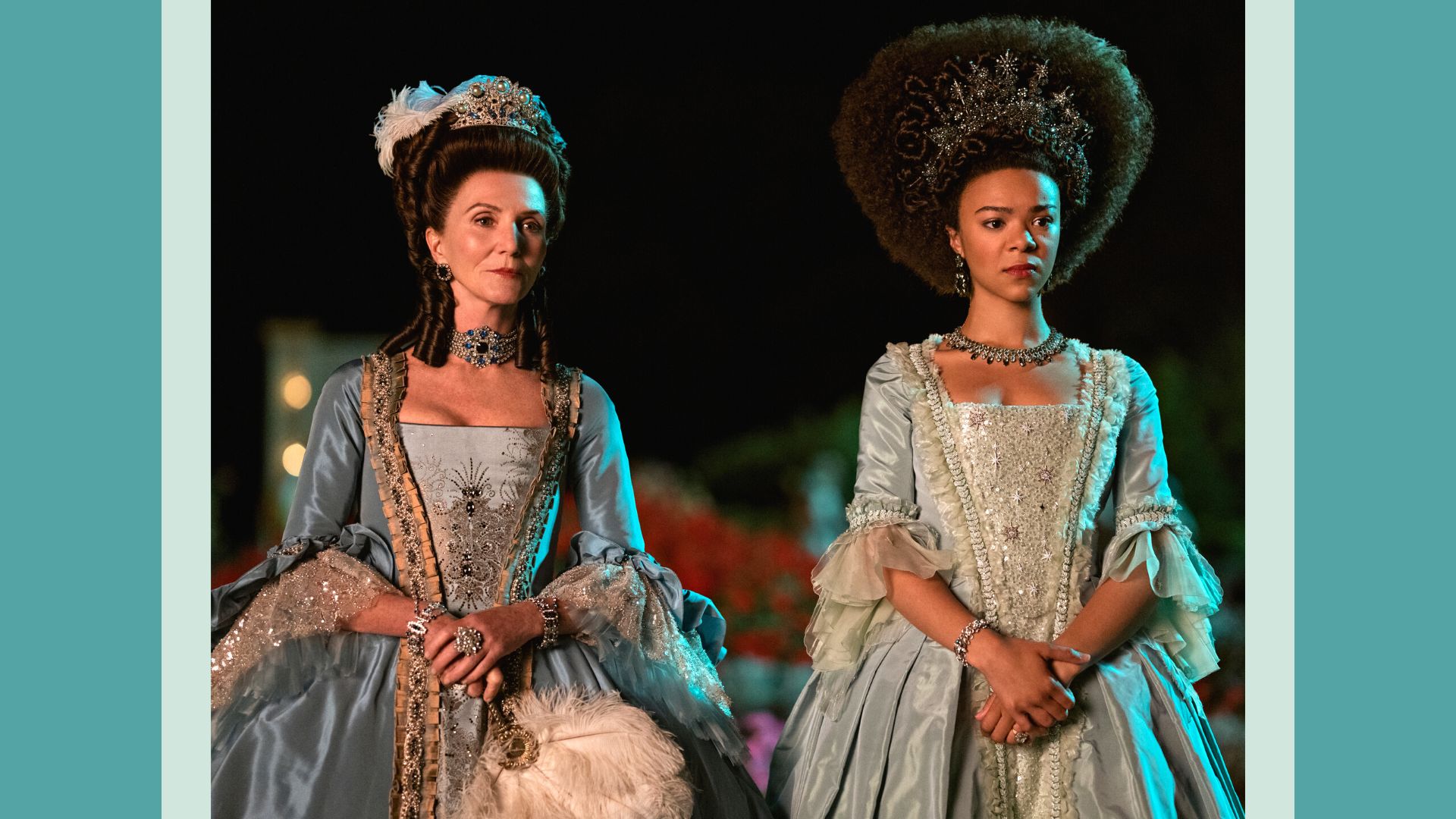
It's the cause of much drama in the Bridgerton spinoff, but is the Great Experiment in Queen Charlotte: A Bridgerton Story?
The Netflix miniseries, which premiered on Thursday, May 4, acts as a Bridgerton prequel, centering on the real-life royal Queen Charlotte (played by India Amarteifio and Golda Rosheuvel at different points in the monarch's life) and her marriage to the King of England, George III (Corey Mylchreest and James Fleet).
Their pairing prompts the so-called Great Experiment, a sociopolitical integration whose effects are felt decades later, well into the original Bridgerton series. (The prequel series takes place about 50 years prior to the Regency action of that series.)
But what exactly is the Great Experiment from Queen Charlotte, and did it actually happen IRL? Here's what to know.
*Warning: spoilers ahead!*
What is the Great Experiment in 'Queen Charlotte: A Bridgerton Story'?
One of the standout features of the Bridgerton universe is the multiracial casting of the royals throughout the Ton, including dukes like Regé-Jean Page's Simon Hastings, Arsema Thomas's Lady Agatha Danbury and Her Majesty herself, Queen Charlotte.
That diversity is no accident—it is the result of the Great Experiment, a desegregation movement enacted by King George III's mother, Princess Augusta (played by Game of Thrones great Michelle Fairley). Upon finding out that the complexion of her son's betrothed is darker than expected, she worries about how an interracial marriage will affect high society.
“The politics of England in this particular period of time, and the politics of most of the world, were complicated,” Queen Charlotte's executive producer Betsy Beers told Netflix Tudum. “And one of the things which Shonda [Rhimes, showrunner] has threaded through the story in this incredibly brilliant way is the idea that the arrival of this woman made it possible for other people of color to rise up through the ranks in English society.”
Princess Augusta decides to invite prominent people of color to the big royal wedding as a way of ushering in Britain's first Black queen and integrating the Ton. The princess bestows official titles to the likes of Lord and Lady Danbury, who also get a status boost from a new, larger estate, invites to important events and the chance to host the first ball of the season.
The Great Experiment does get complicated, however, when Lord Danbury dies. As the first member of his family to reach nobility, Danbury's young widow worries that their newfound wealth and standing in society will not be passed down to the lord's kin as in other noble families. Lady Danbury leverages her close friendship with Queen Charlotte to secure not only her family's rank but also the future integration of Black aristocracy in the Ton.
Was the Great Experiment real?
Though the monarchs at the center of it all were very much real, the Great Experiment of Regency England was not.
“This is not a history lesson. This is fiction inspired by fact. It’s very important to me that people understand that,” show creator Shonda Rhimes told Netflix. “I’m telling the story of Queen Charlotte of Bridgerton, not of Queen Charlotte of England.”
“We asked, ‘What if society embraced those differences in diversity and elevated people of color to prominent positions and ranks?’ ” Queen Charlotte director Tom Verica told Tudum. “The Great Experiment allows us to reimagine what that world could have looked like if that part of Charlotte’s identity had been embraced.”
Was Queen Charlotte black in real life?
Rumors of Queen Charlotte's racial identity have swirled for hundreds of years, with many historians speculating if the monarch was of mixed-cultural heritage, potentially being both of German descent and also having African ancestry.
Per PBS, Charlotte of Mecklenburg-Strelitz is thought to be directly descended from Margarita de Castro y Sousa, a Black branch of the Portuguese royal house. However, that lineage has been disputed by historians and Buckingham Palace even reportedly shot down the Black queen theory: "This has been rumored for years and years. It is a matter of history, and frankly, we've got far more important things to talk about," a palace spokesperson said, per The Independent.
The Queen Charlotte creative team clearly took the Black queen theory and ran with it, casting Guyanese-British actress Golda Rosheuvel as the monarch in the original Bridgerton series and India Amarteifio, who has Ghanaian and German heritage, as the queen's younger counterpart in the prequel.
To portray the royal, both actresses frequently sported natural hair, braided 'dos and afro wigs, a key element in reflecting Black beauty onscreen. "Charlotte’s wigs and costumes are all set in 1813, when England was coming to the end of the Georgian era,” said Rosheuvel to The Los Angeles Times. “We wanted to do this to keep her and the audience rooted in the time frame but also celebrate Black hair in its natural form.” (Want more makeup and hair scoop? Bridgerton's lead beauty artist gives a peek at what it takes to create the Ton's elaborate looks.)
Catch Queen Charlotte: A Bridgerton Story, now streaming on Netflix.







